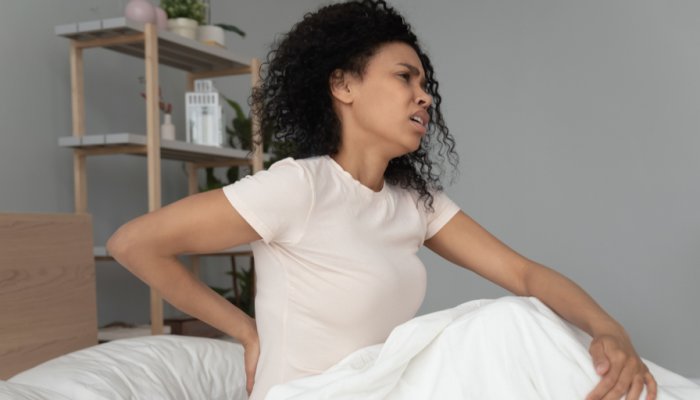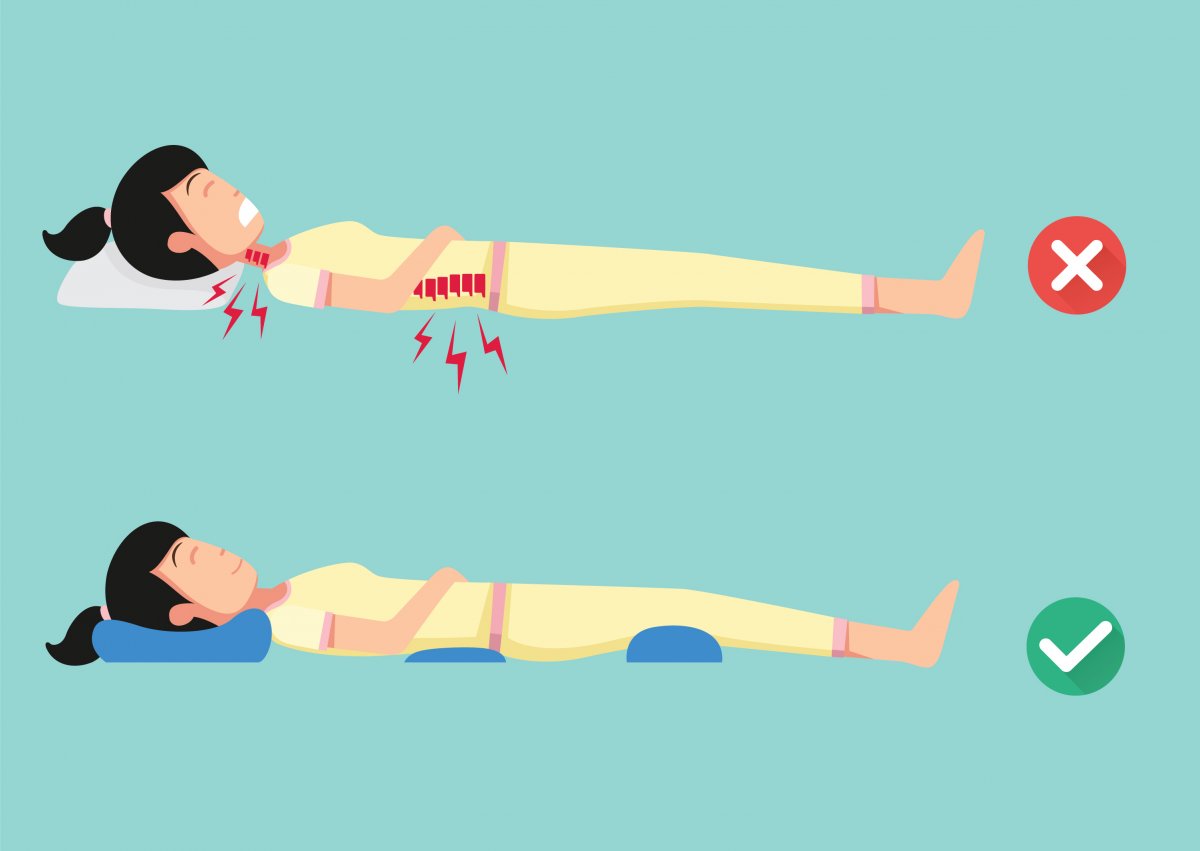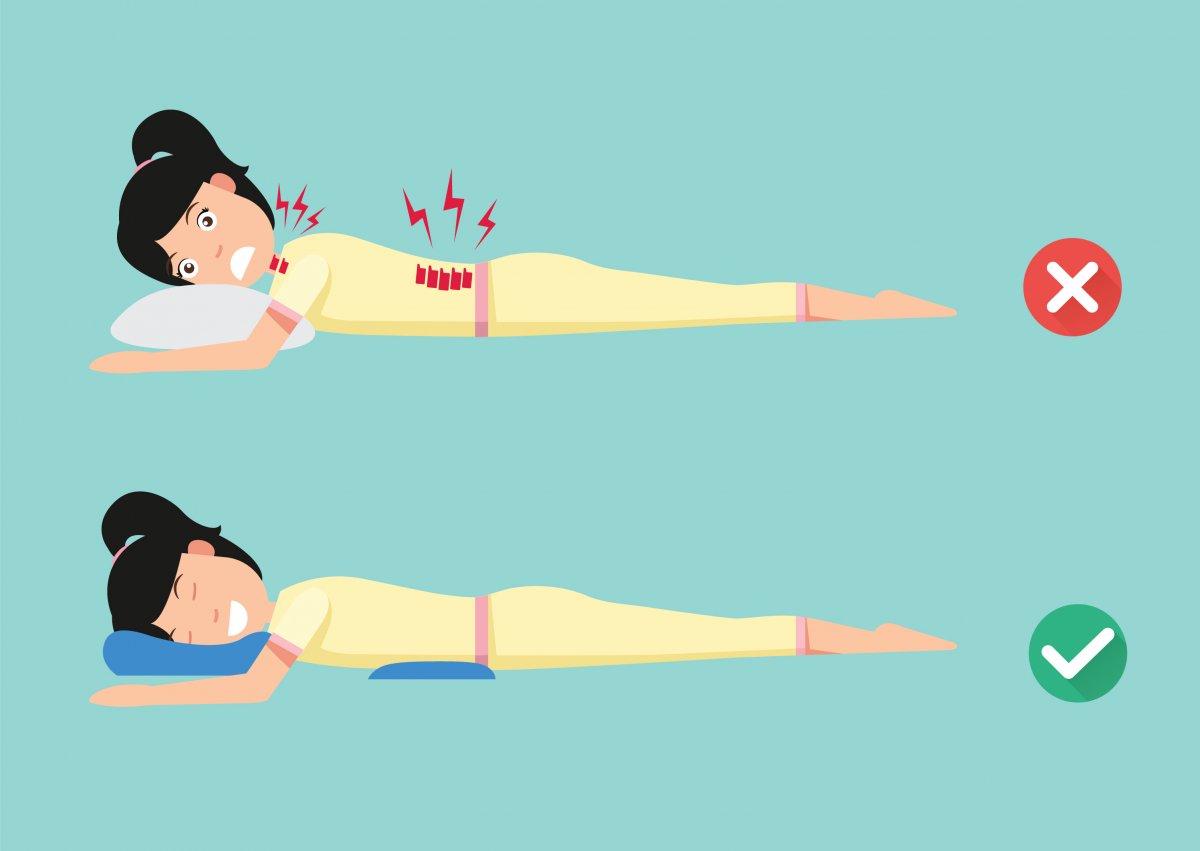How Should I Sleep?

Sleep is one of the most common and important topics we discuss with patients. A good night's sleep can recharge your batteries, decrease pain, and get you ready to start the next day refreshed. However, if you are not getting good quality sleep, it can leave you tired, irritable, and in more pain, than you went to bed.
Patients often blame their poor-quality sleep on an old or cheap mattress. While having the proper support from your bed is integral to a great night's sleep, sleeping in the wrong position can still cause pain and limit quality sleep. So before you invest $2,000 - $3,000 in a brand new mattress, try using the proper positioning. This article will highlight the conditions each position can increase or decrease and some helpful tips that let you sleep in the correct position immediately.
Side Sleeping
Sleeping in a side-lying position is the most common sleep position. This position is an excellent option for most people when done correctly. It is the best position for those suffering from low back pain, sciatica, and sleep apnea. Additionally, research suggests that sleeping on your left side is preferable to your right. Thanks to the unique arrangement of your internal organs, left-side sleepers may see benefits in improved digestion and blood flow. Side sleeping can also help reduce heartburn.
Side Sleeping Cons
- Numbness in the arm and hands when positioned with your arm under the side.
- Shoulder pain due to too much pressure on the rotator cuff
- Hip pain and low back pain with poor positioning
- Neck pain with poor pillow support
How to Side Sleep Properly
- Try to keep your back as straight as possible. The best way to achieve this is with a quality mattress that supports the curvature of your body while still embracing the pressure points of your shoulders and hips.
- Bend your knees up and position a pillow between your legs; this will reduce the pressure on the low back and hips.
- A tall pillow that keeps your neck straight better with your spine (as opposed to sleeping with your head cocked to one side)
- The key to fighting shoulder pain is the correct pillow height and arm position. Find a pillow that provides excellent support for your neck and is the right height to keep your spine in alignment.

Back Sleeping
Sleeping on your back is often recommended as the best position for preventing aches and pains in the morning. Lying on your back evenly distributes weight across the broadest surface of your body, minimizing pressure points and ensuring proper alignment of your internal organs. Back sleeping is the best position for those suffering from shoulder pain, rotator cuff tendonitis, and neck pain. Back sleeping also helps to minimize pain from sciatica and low back pain.
Back Sleeping Cons
- Back sleep can lead to problems with snoring since gravity pulls your tongue to the back of your throat, and it isn't recommended for people who suffer from sleep apnea.
How to Sleep on Your Back Properly
- Place a pillow or rolled-up towel supporting your knees and decrease tightness in the hip flexor (iliopsoas) muscle.
- Place a small pillow or towel in the small of your back while evenly distributing your weight across your hips.
- While on your back, use a flat pillow to rest your head. Use a small, rounded one to support the natural curve of your neck.

Stomach Sleeping
Sleeping on the stomach is not often recommended. This position commonly causes pain in the neck and low back. Stomach sleeping can reduce snoring and help in some cases of sleep apnea.
Stomach Sleeping Cons
- Increased risk for neck pain due to having to turn to one side.
- Lying chest-down straightens your spine into an unnatural position, leading to lower back pain.
- Not recommended during pregnancy
How to Stomach Sleep Properly
- Switch out that thick pillow for a razor-thin one (or no pillow at all)
- Prop a pillow under your pelvis to add some curve to your spine
- Do some stretches in the morning to ease back pain

How to Transition to a New Sleep Position
The transition period required to get used to a new sleep position can be difficult. That's in large part because you'll likely be getting some pretty lousy sleep while your body gets used to your new positioning. If you're determined to change the way you sleep, here are some tips to shorten the transition period and start your new life of sleeping bliss!
- Block out all-natural light in your room and banish electronic devices from your life for the two hours leading up to your bedtime.
- Sleep on the opposite side of your bed from what you usually do. Your body may be less likely to revert automatically to your old position.
- Don't skimp on extras like a high-quality pillow and stretchy mattress covers and sheets.
Be persistent and patient if you genuinely want to make a change to your sleeping habits. If your goal is to improve the quality of your sleep, it may be well worth it.
